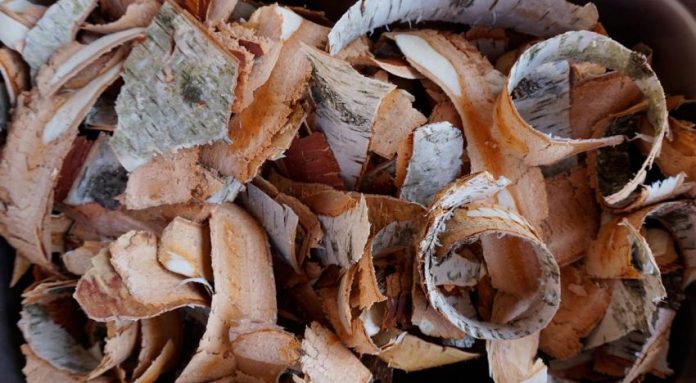Just like when we harvest an animal, when we harvest a tree, it is best to use every functional part. There are many amazing uses for tree bark, many of which will help us survive in an emergency or help us succeed in the long term if we need to live without the common comforts we would be used to.
Tree bark, including shelter and water proofing, transportation, fire, food and medicine, as well as safety equipment, all of which can be made from tree bark, which have some surprising uses.
Sustainable Foraging
Gathering tree bark should be carried out conscientiously and sustainably, even in a survival situation, and especially for recreational foraging and acquiring practical wilderness survival skills. Harvest bark from pruned branches without compromising the tree trunk, where possible.
The tree would be killed by removing bark from the complete circumference of the trunk of the tree, often called girdling. For the tree to survive, it is recommended that no more than 1/3 of the circumference of a tree be taken. Even in a serious life-threatening situation, I would suggest taking even less.
Related: 11 Survival Tricks I Learned from Homeless People
Identifying Tree Species
Plant identification is probably one of the most significant bushcraft skills, particularly if you intend to eat or consume plant parts or use plant-based medicine. In a survival scenario, learning about the plants and trees that grow in your area will go a long way towards understanding how to use them.
The variance in evergreen conifer needles is determined by a simple identification tip. The pine needles are long and grow in two, three, or five bundles. Fir trees have flat needles, like Douglas fir (which is not a true fir). Spruce trees typically have three or four-sided angular needles.
Related: 10 Trees Every Survivalist Should Know and Why
Food
We’re talking about eating tree bark here so clearly things don’t really go very well. Edible tree barks exist, some of them more palatable than others. Others can also be eaten raw and pretty fine, some need to be cooked or dried and ground into flour, and some are a decent source of food, and some can keep you alive in desperate circumstances.
1. Raw Tree Bark
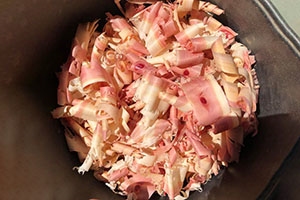

Barks that can be eaten raw include the pine’s inner bark that is succulent and sweet as sap flows in spring.
Often, it can be boiled. Eating too much of it will induce a stomach ache, so it is best to use some caution.
Cedar, larch (tamarack), balsam poplar, trembling aspen, alder, and maple’s moist inner bark can be eaten fresh, and I think they are probably at their best in the spring as well.
2. Dried Tree Bark
Beech, cedar, birch, willow, alder, and pine are inner barks of trees that can be dried and ground into flour. The inner bark of hemlock, larch, and spruce may also be ground into a meal to increase the food supply for mainly survival use.
3. Cooked Tree Bark
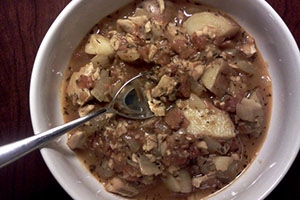

The inner barks of oak, birch, willow, alder, and maple are the barks which are best fried.
These can be incorporated or cut into strips and used like spaghetti in soups and stews.
Related: Edibility Test: Find Out Which Backyard Weeds are Edible
4. Tree Bark Tea
Apple bark and birch bark tea is the bark that makes good tea. In the Medicinal Tea portion, there are several more teas mentioned below.
Shelter
5. Bedding
Similarly, tree bark can be used to insulate the ground inside a shelter, making it drier to sleep on and a mattress and blankets can be fairly produced by pounding bark fibers into fluffiness.
6. Roofing Material
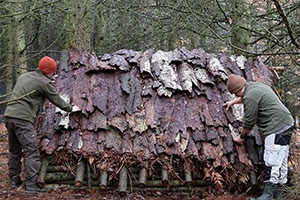

Bark has been protecting the tree for its lifetime, so it only makes sense that it is a choice to use bark slabs as tiles as an emergency or even long-term roofing solution, and bark has traditionally been commonly used for this purpose.
Healthy choices include sourcing bark from dead Douglas fir, birch, and cedar trees.
7. Insulation
It is possible to pound many bark fibers, particularly cedar, into a fluff and use them as an insulator for emergency shelters.
Clothing
8. Belt
This may be dark, but most of us would lose weight in a serious survival scenario. We’re, after all, pigging out on pine bark. To help hold your foraged supplies, the use of twisted or braided willow and cedar bark fibers might fashion a handy belt to keep your pants up or even a satchel strap. Dual intent takes on a whole new significance during survival.
Related: How to Make Your Clothes Last For Years
9. Hat
A hat will go on its way to keep you dry, warm, and shield you from the sun by spending a substantial amount of time outdoors. In order to form a defensive survival cap, birch and cedar may become very pliable when boiled.
10. Woven Fabric and Thread
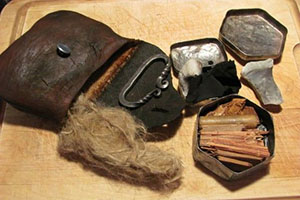

Many people around the world have historically used bark to make clothes. It is difficult for the body and skin to run around in the bush, and fashioning sturdy, protective clothing or even armor will help get you through a tough day.
A mixture of birch, cedar, willow, or other fibrous bark material may be twisted, heated, boiled or pounded into softness, taken in sheets, strips, or threads, and may be sewn together depending on your skill level so that you can shield yourself from the elements.
11. Sunglasses or Snow Goggles
It is pain if you have endured snow blindness, and sunburned eyes are also not pleasant. In a survival scenario, shielding the eyes may be paramount. Snow goggles were created by the Inuit of Northern Canada, often from birch bark by cutting the bark to fit around the eyes and making narrow slits in front of the eyes to see out so that their vision could be shielded from the sun glaring off the snow.
Medicine
12. Wound Care: Bandages, Absorbent Dressings, and Cast Material
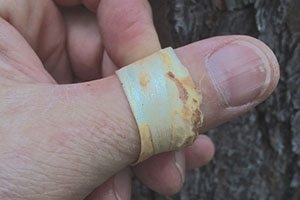

By boiling balsam poplar bark into a thick syrup, you can make a cast that can be weak on cloth to make casting material to set broken bones.
The inner pine bark can also be used as dressing for burns, scalds, and infections, while the pounded fluffy material made from barks such as cedar can be used to staunch bleeding in bandages and absorbent dressing.
12. Medicinal Teas
It has been practiced for centuries to make teas from tree bark to extract medicinal properties. Each of us may like our tea stronger or weaker, hotter, or colder, but 1 teaspoon of well-chopped bark to 1 cup of water will be a simple rule of thumb for bark tea, boiled for up to 10 minutes, and steeped for an additional 20 to 30 minutes.
Willow, trembling aspen, and red-osier dogwood are bark teas with analgesic properties.
You should try hemlock, larch, balsam poplar, and high-bush cranberry for respiratory and breathing problems.
Spruce, trembling aspen, and high-bush cranberry are bark teas to help digestion and stomach issues.
Related: Similar to Morphine: The Best Natural Painkiller that Grows in Your Backyard
13. Poultices
Wounds, bruises, scrapes, insect bites, slivers, inflammation, rashes, and ulcers are just a few skin mishaps that without adequate healing and treatment, can cause irritation and even become life-threatening. It may help to provide soothing relief for certain barks used as poultices, a moist mash of bark kept in place with cloth. These include spruce, larch, balsam poplar, willow, alder, and hazelnut inner bark.
14. Medicinal Washes


The healing process may be aided by washing wounds, burns, infections, bites, or other skin problems.
The same way a bark tea is made, medicinal washes will speed up recovery and reduce infection.
Healthy choices for wound cleaning are boiled hemlock bark, alder bark tea, and oak bark tea.
16. Dental Medicine
Chewing willow bark can clean teeth and prevent cavities while chewing oak bark can relieve toothache pain.
Food Growing, Gardening & Landscaping
17. Weeds Control
Cedar bark mulch can inhibit growth in plants, as well as fungus and bacteria, so can be a clean way to keep an area free of weeds, pests, and disease, while also smelling wonderful.
#18. Healthy Soil
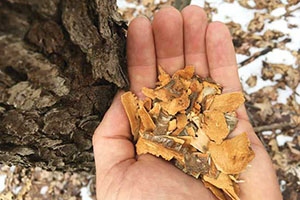

For a long time, Douglas fir bark mulch lasts, maintains its dark brown colors, and helps maintain moisture in the soil.
It can be used close to trees, shrubs, flowers, and vegetable plantings.
Related: 6 Practical Uses for Autumn-Falling Leaves
19. Root Growth
Willow bark tea contains a rooting hormone and can be used for watering seedlings as it will promote root growth.
Transportation
20. Canoe
A tree bark canoe will be a project of master survivalists that incorporates bushcraft and woodworking skills. Please note, do not take bark from live trees when trying a project of this size, as removing more than 1/3 of the bark from a living tree would scar and potentially destroy the tree.
Related: 5 Best Wood Cutting Tools
21. Sled
Using the slippery, grainy sides of some barks like white fir or paper birch can be used to make a sled for pulling heavy materials over smooth surfaces.
Tools and Accessories
22. Mats
Woven mats can provide a clean cooking, sleeping, and working area and can be made by twisting long bark fibers together and weaving them together.
23. Baskets
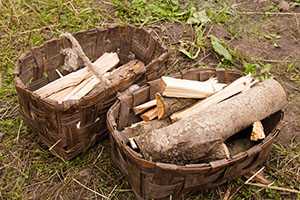

It is possible to create baskets from woven flexible bark strips or bark sheets shaped into baskets or containers.
There are viable choices for willow, cedar, and birch, but definitely try to use what you have in the vicinity.
Related: Heat Your House with Wood: Tips & Common Mistakes
24. Tree Bark Ropes
Rope and twine can be important products in survival conditions with infinite applications, and many twisted or braided bark fibers can be turned into rope or twine.
#25. Preservatives
It is possible to make preservatives and dyes from the barks of hemlock and alder for tanning hides and coloring wooden products such as paddles.
In a survival scenario, understanding tree and shrub species and how to use their bark could save lives. Tree bark has a range of uses and can help us survive and thrive by using our imagination and creativity.



